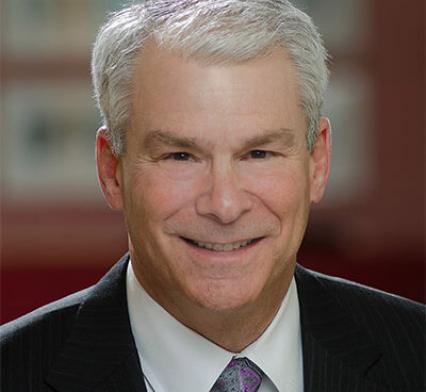Future Focus
These reports paint a picture of a rapidly-changing business landscape: new companies starting, new deals being made, new technologies gaining a foothold. And every business leader is aware of how his or her own industry is being transformed. But how much are we relating these developments to the seismic social and technological shifts our society is experiencing? And how well are we preparing our people – our greatest asset – for the changes that lie ahead?
To address both those questions, I recently invited noted futurist Jack Uldrich to speak to Pinnacol’s 650 employees. We are rapidly evolving our company, particularly in the digital space, to ensure we remain relevant for Colorado businesses as their own industries transform. And as you might imagine, it’s challenging for many of our employees to deal with both the scale and speed of change we’re asking of them. While my team and I have been educating our colleagues for the last two years about the disruption in the insurance industry and the need to alter the way we do business to better serve our customers, that’s not enough. We also need to help our employees think about how they themselves adapt and thrive in this fast-changing landscape and develop the tools and skills to do so.
An overriding theme in Jack’s presentation was that the way we have always thought about jobs and customers no longer applies. When data storage has increased a trillion-fold, data processing a thousand-fold and 5G data speeds are 100 times greater than 4G, traditional business approaches simply don’t make sense.
For example, think about the implications of digital printing for the supply chain and the real estate market. Adidas can digital-print shoes anywhere, which radically alters not only their manufacturing but their logistics needs. What other types of companies might be able to deploy technology in ways that will also change our future need for trucking services and warehouse space? Or consider the impact of new technologies on construction: a 4-bedroom house was recently digitally printed outside Paris in 2 days, and a 57-story building was erected by robots in China in just 19 days.
Of course, the savings in time and money that these innovations represent come at a real human cost. Jack pointed out that successful leaders embrace ambiguity. I would add: they also help their people do so. We have a responsibility to ensure that the truck drivers, construction workers and a vast array of white collar workers whose jobs are at risk have the skills, curiosity and flexibility to embrace technology and use it to think differently about their own roles and abilities. In my own company, we are developing a training plan to ensure that our employees whose jobs will be transformed by automation build the new skills that will allow them to transition into different roles.
As Jack noted, despite the speed of change right now, today is the slowest rate of change we will ever experience. We can’t allow our people to be left behind.
